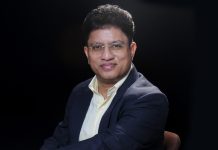India’s liquefied natural gas (LNG) import terminals experienced heightened activity in the last fiscal year as imports rebounded, benefiting from the easing of global gas market turbulence observed in the preceding two years.
According to data from the oil ministry, capacity utilization at most import terminals increased during the year. India’s largest import terminal at Dahej, operated by Petronet LNG in Gujarat, saw its utilization rise from 78% in FY23 to 95% in FY24.
Petronet LNG’s Kochi terminal saw an increase from 19% to 21%, while GAIL’s terminal at Dabhol in Maharashtra witnessed a rise from 39% to 43%. Indian Oil’s Ennore terminal in Tamil Nadu also showed improved performance, increasing from 13% to 18%.
In its first year of operation in 2023-24, Adani Total’s terminal at Dhamra in Odisha operated at 27% capacity. However, there was a decline in capacity utilization at the Hazira and Mundra terminals in Gujarat. Shell’s Hazira terminal operated at 30%, down from 37% the previous year, and GSPC LNG’s Mundra terminal fell from 16% to 15%.
The increase in LNG imports by 19% to 31 billion cubic meters in the last fiscal year contributed to the rise in capacity utilization at LNG terminals. This growth contrasts with the 15% decrease observed in FY23 when imports fell to 26 billion cubic meters.
The global gas market faced turmoil in the previous two years due to the post-pandemic recovery and the Ukraine war, which constrained supplies and led to soaring prices. This turbulence had a notable impact on India’s gas imports in 2022-23. However, with global markets stabilizing and prices becoming more favorable for Indian buyers, imports have rebounded.
As reported by msn.com, India currently possesses approximately 40 million tons per annum (mtpa) of LNG import capacity, with only one of the seven terminals operating above 50% capacity and five terminals operating at 30% or below capacity.































